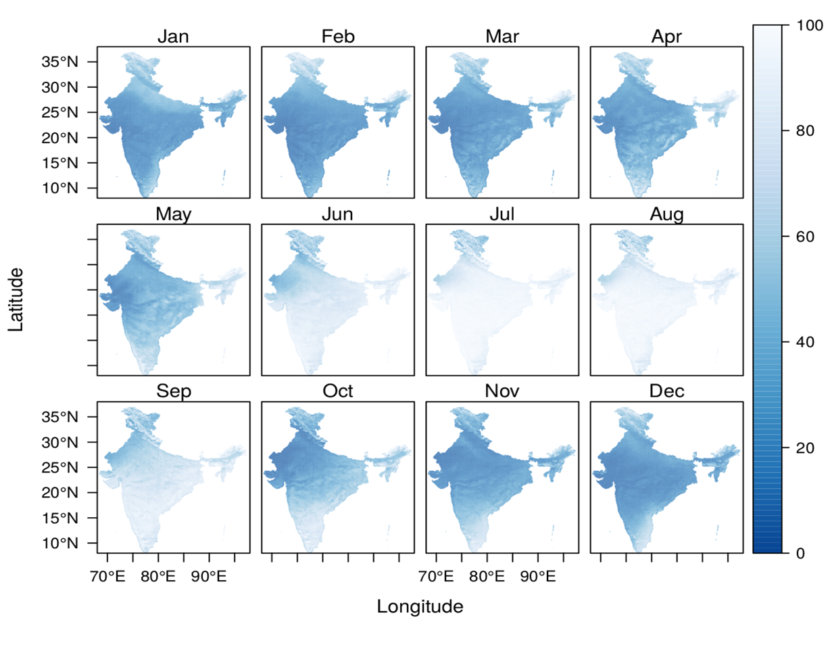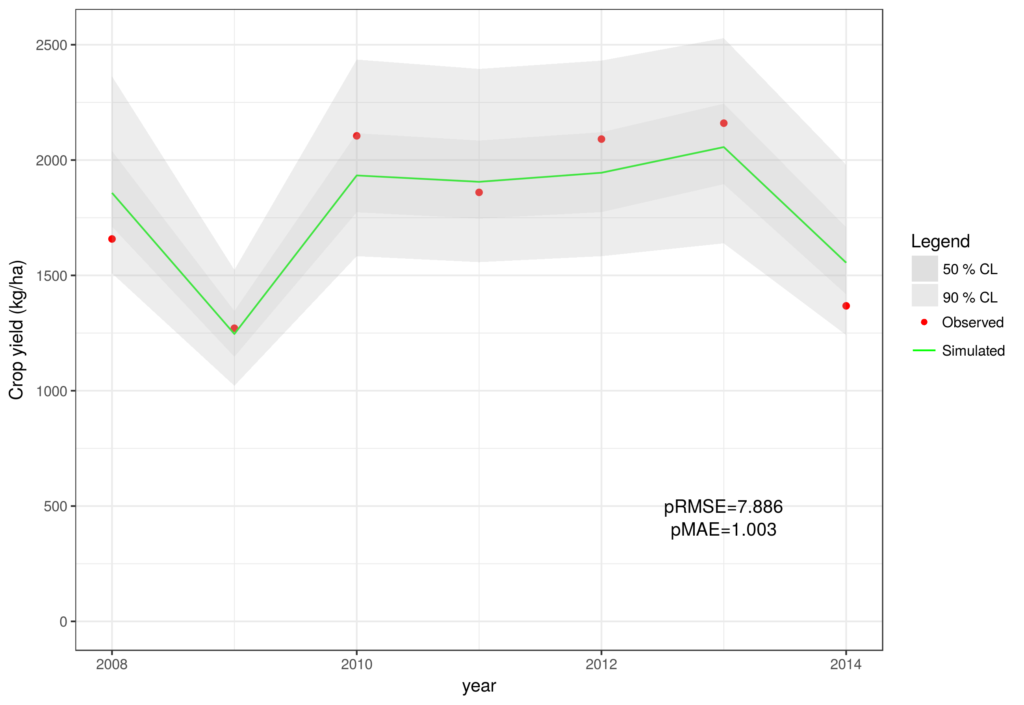The crop yield estimation allows the better management of crop for various purposes. The conventional method of crop yield estimation is the field based which is very costly in time and money and may incur large error in the estimation due to the incomplete ground observations. The satellite remote sensing allows for the coverage of all fields in a short span of time.
Vegetation indices e.g. NDVI, EVI are used for the crop yield estimation. Though these indices provide higher resolution data, sometimes it is very difficult to obtain cloud-free images. These indices are based on the optical data which is incapable of penetrating cloud and hence these indices are not useful during Kharif season when clouds are prevalent in India. Above figure shows the average monthly cloud condition over entire India1. As can be seen from the figure, most of the India is almost invisible during Kharif season.
Microwave sensor based satellite remote sensing is better suited for acquiring images under any weather conditions like cloud cover, rain, snow etc. and it also provides higher spatial resolution images. Aapah Innovations created a model for soybean crop yield prediction using time series of remote sensing satellite data from 2008 to 2014 for different districts of Telangana state. The model was developed using the advanced statistical tool i.e. copula probabilistic method. The copulas allow the estimation of the uncertainty also in the estimate. As an example, the below figure shows the estimated soybean crop yield along with the uncertainty in the estimate and observed data in Nizamabad district. The model is able to estimate the crop yield quite well with percent Mean Absolute Error being just around 1%.
The model can be used to monitor the growth of crop in near real and time and simulate the likely crop yield. To know more about the model, contact Aapah Innovations.
Miral Parmar
Latest posts by Miral Parmar (see all)
- Want to know how Turmeric is growing in your area? - October 31, 2017
- Crop yield estimation during monsoon season using satellite remote sensing - June 11, 2017
- High resolution near real time monitoring of crop - May 13, 2017
http://www.earthenv.org/ ↩







